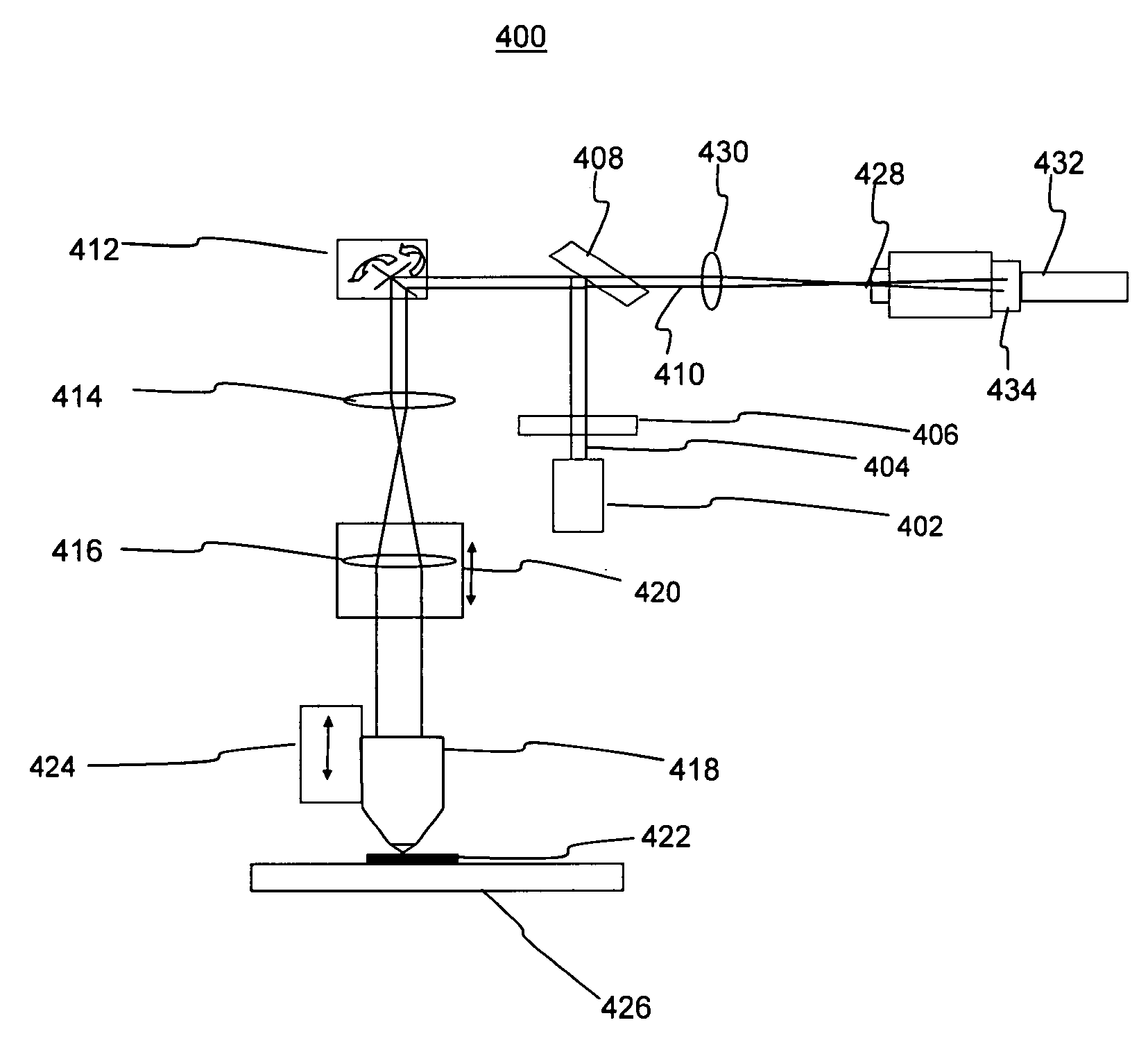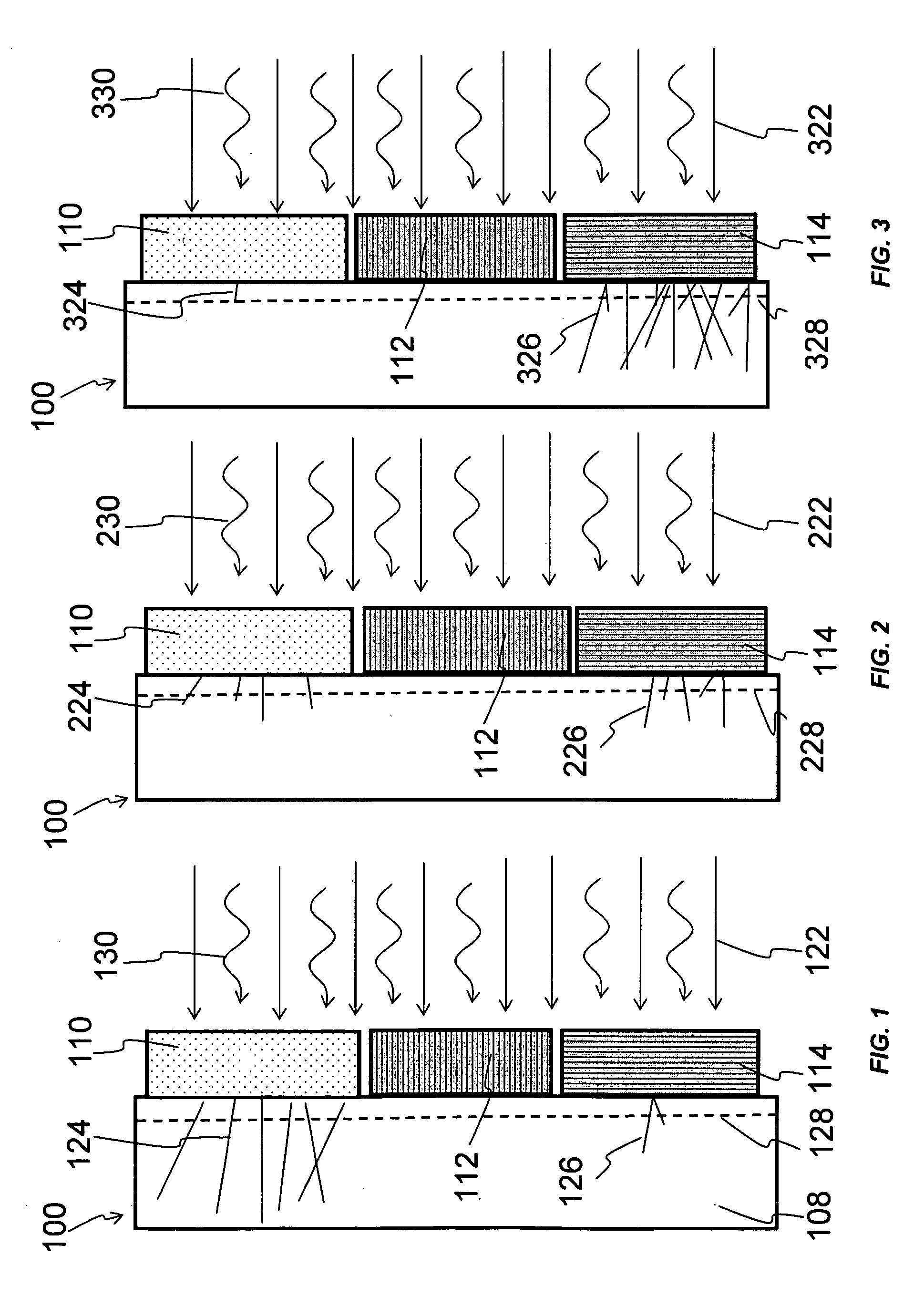Method of luminescent solid state dosimetry of mixed radiations
a solid state dosimetry and mixed radiation technology, applied in the field of radiation dosimetry techniques, can solve the problems of difficult discrimination between radiations, low saturation fluence, and difficulty in neutrons and heavy charged particles (hcp) to achieve the effect of low saturation fluence, low saturation fluence, and laborious wet-chemistry processing
- Summary
- Abstract
- Description
- Claims
- Application Information
AI Technical Summary
Benefits of technology
Problems solved by technology
Method used
Image
Examples
example 1
[0124]Calibration of detector sensitivity to gamma radiation. Detectors made of a luminescent Al2O3:C,Mg crystal in the form of plates with dimensions 4 mm×6 mm×0.5 mm are cut along the optical c-axis and polished on the larger opposing sides to obtain optically transparent surfaces. The crystalline detectors have a green coloration due to the optical absorption band at 435 nm with an absorption coefficient of 13 cm−1. The dosimeter configuration is similar to the configuration of FIGS. 1, 2 and 3 provides the luminescent crystalline detector and two converters: a HDPE converter for gamma plus fast neutron measurements, and a PTFE converter for gamma dose measurements.
[0125]A set of Al2O3:C,Mg luminescent detectors are irradiated with gamma photons from a 137Cs source with known absorbed dose in tissue in the range from 3 mGy to 10 Gy. The detectors are then read using the laser scanning confocal system schematically shown in FIG. 4 starting with the side in contact with the HDPE co...
example 2
[0127]Calibration of the detector sensitivity to fast neutron radiation. Another set of Al2O3:C,Mg detectors having both PTFE and HDPE converters are irradiated with neutrons from a 241AmBe source having an activity of 185 MBq with a range of known doses, for example from 1 mSv to 1,000 mSv in tissue. The plates are then read using the laser scanning confocal system in FIG. 4 starting with the side in contact with the HDPE converter and then the side in contact with the PTFE converter. The resulting images are processed by performing the Fast Fourier Transform. The magnitude of the FFT is calculated and squared yielding the three-dimensional power spectrum of the image similar to FIG. 7. The power spectrum is then integrated in cylindrical coordinates sequentially from the lowest useful spatial frequency (0.01 μm−1) to the largest useful spatial frequency (1.5 μm−1) resulting in the amplitude of the power (one-dimensional power spectrum) at frequencies in the image in a range of 0.0...
example 3
[0129]Discriminating neutrons and gamma using PE and polytetrafluoroethylene converters. The dosimeter configuration similar to the configuration of FIGS. 1, 2 and 3 provides the luminescent crystalline detectors and two converters: a HDPE converter for gamma plus fast neutron measurements, and a PTFE converter for gamma dose measurements.
[0130]Irradiations of the single crystal detectors are performed with fast neutrons at a distance of 200 mm from a bare 241AmBe source having an activity of 185 MBq. Gamma irradiation of the same detector is performed from a 137Cs source in addition to neutron irradiation to imitate a mixed neutron-gamma field. Different ratios of neutron and gamma doses are delivered to the dosimeters and are listed in Table 1 of FIG. 19. Table 1 is a summary of processing mixed neutron-gamma irradiations. The total dose equivalent in tissue contains gamma component from the 241AmBe irradiations. The plates are processed with the same method as Examples 1 and 2 to...
PUM
 Login to View More
Login to View More Abstract
Description
Claims
Application Information
 Login to View More
Login to View More - R&D
- Intellectual Property
- Life Sciences
- Materials
- Tech Scout
- Unparalleled Data Quality
- Higher Quality Content
- 60% Fewer Hallucinations
Browse by: Latest US Patents, China's latest patents, Technical Efficacy Thesaurus, Application Domain, Technology Topic, Popular Technical Reports.
© 2025 PatSnap. All rights reserved.Legal|Privacy policy|Modern Slavery Act Transparency Statement|Sitemap|About US| Contact US: help@patsnap.com



